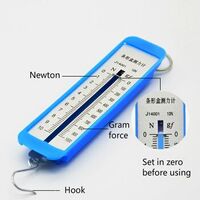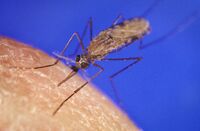力
力 X529B is Unicode character number 21147, KanjiLiberal.
力 can be pronounced as ちから (chikachi) and mean force or energy [3]
力 can be pronounced as か (ka) and mean mosquito [4][5][6].
力 is easy to confuse with other characters:
⼒, カ, 力, 力 have similar pictures.
Confusion: ⼒, カ, 力, 力
The four Unicode characters have similar pictures:
Manuals do not even mention this confusion [11]. The confusions may lead to errors, misunderstandings, wars. In order avoid the mistakes, some programming is necessary.
Encoding
The Utf8 encoding of カ and similar characters can be revealed by program ud.t with command
php ud.t 2F12 30AB 529B F98A
File uni.t also should be loaded for the execution. Then, the output is
K= 5
2F12 12050 ⼒ ⼒
Unicode character number 12050 id est, X2F12
Picture: ⼒ ; uses 3 bytes. These bytes are:
XE2 XBC X92 in the hexadecimal representation and
226 188 146 in the decimal representation
30AB 12459 カ カ
Unicode character number 12459 id est, X30AB
Picture: カ ; uses 3 bytes. These bytes are:
XE3 X82 XAB in the hexadecimal representation and
227 130 171 in the decimal representation
529B 21147 力 力
Unicode character number 21147 id est, X529B
Picture: 力 ; uses 3 bytes. These bytes are:
XE5 X8A X9B in the hexadecimal representation and
229 138 155 in the decimal representation
F98A 63882 力 力
Unicode character number 63882 id est, XF98A
Picture: 力 ; uses 3 bytes. These bytes are:
XEF XA6 X8A in the hexadecimal representation and
239 166 138 in the decimal representation
This confusion refers not only to the Human perception of the images.
The most of software confuses the last two, substituting
力 XF98A to 力 X529B without any warning message.
The Google search for ⼒ kanji
suggests https://jisho.org/search/%23kanji%20怪 [12] that has nothing to do with character ⼒.
In cases of the confusion, character 力 can be supplied with its hexadecimal number X529B.
Semantic
Term 力[3] is highly ambiguous: many physical quantities (force, energy, power, etc) are combined into a single character. This confusion is an addition to the similarity of the graphical representation of the four characters ⼒, カ, 力, 力.
力 perfectly matches the needs of an ignorant author, who does not know difference between the mathematical expectation and probability, between integral and logarithm, between Nibelungs and Fudoki, between virus and bacteria, between voltage and current, between force, energy, power and momentum, or does not know order of magnitude of quantities he or she is talking about: 10^12 or 10^18 (in the last case, term Trillion can be used to indicate the ignorance of the author).
For this reason, character 力 is not recommended in expressions of scientific concepts. Instead, the terms borrowed from English, written in Katakana or Romanji, can be used:
etcetera.
Conclusion
The four Unicode characters ⼒, カ, 力, 力 have similar graphical representations, similar sounds and similar (and pretty wide) sets of meanings.
This is not a problem of a foreign language. Even a native Japanese speaker, looking at characters ⼒, カ, 力, 力, cannot guess, which of them is 力 (X2F12).
In some cases, the sound and meaning of character 力 can be revealed, guessed from the context.
Manuals of Japanese do not mention the confusion above, and do not suggest any way to handle it.
For this reason, the four characters above are not recommended for the use in meaningful (scientific) tests.
References
- ↑ https://imall.com/product/wholesale-Newton-meter-Force-1N-2.5N-5N-10N-dynamometer-Plastic-tubular-spring-balances-Physics-Lab-experiment/Home-Improvement-Furniture-Apparel-Accessories-Electronic-Components-Supplies-Office-School/aliexpress.com/32701563552/144-3371151/en wholesale Newton meter,Force Meter,1N / 2.5N / 5N / 10N dynamometer, .. (2021)
- ↑ https://ja.wikipedia.org/wiki/カ カ(蚊)は、ハエ目(双翅目)糸角亜目カ科(学名: Culicidae)に属する昆虫である
- ↑ 3.0 3.1 https://jisho.org/search/力 ちから 力 common word jlpt n4 wanikani level 1 Play audio Links Noun 1. force; strength; might; vigour; vigor; energy あなたは わたし 私の にばい 2倍の ちから 力がある。You are twice as strong as I. Noun 2. capability; ability; proficiency; capacity; faculty あなたは しゅうちゅう 集中する ちから 力を うしな 失ってしまった。You've lost the ability to concentrate. Noun 3. efficacy; effect チョコレートにはLDLの さんか 酸化を ぼうし 防止する ちから 力がある。Chocolate acts to prevent LDL oxidisation. Noun 4. effort; endeavours; endeavors; exertions Noun 5. power; authority; influence; good offices; agency あいての きじゅん 基準を うけい 受け入れるのは、そのあいての ちから 力に ふくじゅう 服従することだ。Accepting the other's norms is submitting to the other's power. Noun 6. support; help; aid; assistanceSee also 力になる Noun 7. stress; emphasis たい 大した ちから 力にはならないかもしれませんけど、 おうえん 応援します。It might not be worth much, but you have my support. Noun 8. means; resources Wikipedia definition 9. ForceIn physics, a force is any influence that causes an objec... Read more Details ▸ りょく 力
- ↑ https://ejje.weblio.jp/content/mosquito mosquito とは 意味・読み方・使い方 発音を聞く プレーヤー再生 ピン留め 単語を追加 主な意味 カ(蚊)
- ↑ https://kotobank.jp/word/カ-1515297 カ(読み)か(英語表記)mosquito 翻訳|mosquito 日本大百科全書(ニッポニカ)「カ」の解説 カ か / 蚊 mosquito
- ↑ https://ja.wikipedia.org/wiki/カ
- ↑ https://util.unicode.org/UnicodeJsps/character.jsp?a=2F12 ⼒ 2F12 KANGXI RADICAL POWER Han Script id: allowed confuse: 力 , 力 , カ
- ↑ https://util.unicode.org/UnicodeJsps/character.jsp?a=30AB カ 30AB KATAKANA LETTER KA Katakana Script id: restricted confuse: ⼒, 力, 力
- ↑ https://util.unicode.org/UnicodeJsps/character.jsp?a=529B 力 529B CJK UNIFIED IDEOGRAPH-529B Han Script id: restricted confuse: ⼒, 力, カ
- ↑ https://util.unicode.org/UnicodeJsps/character.jsp?a=F98A 力 F98A CJK COMPATIBILITY IDEOGRAPH-F98A Han Script id: allowed confuse: ⼒, 力, カ
- ↑ Similar confusion takes place in the Soviet textbooks of history. They do not mention, that term Communism has two opposite meanings: (1) utopia about prudent society without money and (2) kind of fascism, slavery, satrapia with strong social inequality, heavy exploitation of labour, unlimited power of usurper, gensek and brutal suppression of any doubts in Sovetism (the official religion of communists).
- ↑ https://jisho.org/search/%23kanji%20怪 怪 8 strokes Radical: heart 心 (忄, ⺗) Parts: 又 土 忙 Variants: 恠 suspicious, mystery, apparition Kun: あや.しい、 あや.しむ On: カイ、 ケ Jōyō kanji, taught in junior high JLPT level N1 1634 of 2500 most used kanji in newspapers
- ↑ https://ja.wikipedia.org/wiki/エネルギー 物理学において、エネルギー(独: Energie)またはエナジー(英: energy)は、仕事をすることのできる能力のことを指す[1][2][3]。物体や系が持っている仕事をする能力の総称[4]。
- ↑ https://ja.wikipedia.org/wiki/力_(物理学) 物理学における力(ちから、英: force)とは、物体の状態を変化させる原因となる作用であり[1]、その作用の大きさを表す物理量である。特に質点の動力学においては、質点の運動状態を変化させる状態量のことをいう[2]。広がりを持つ物体の場合は、運動状態とともにその形状を変化させる。 本項ではまず、古代の自然哲学における力の扱いから始め近世に確立された「ニュートン力学」や、古典物理学における力学、すなわち古典力学の発展といった歴史について述べる。 次に歴史から離れ、現在の一般的視点から古典力学における力について説明し、その後に古典力学と対置される量子力学について少し触れる。 最後に、力の概念について時折なされてきた、「形而上的である」といったような批判などについて、その重要さもあり、項を改めて扱う。
- ↑ https://ja.wikipedia.org/wiki/パワー パワー(英語: power) 力、能力のこと。または、知力、体力、精神力のこと。 権力、権限、権威のこと。 大国のこと。 電力、電源、入力電圧のこと。Power stationで発電所。

